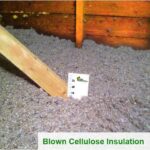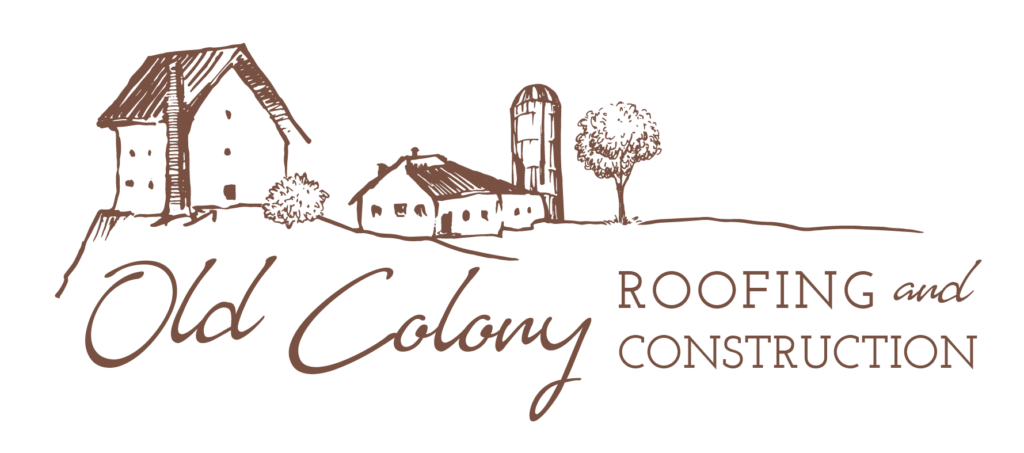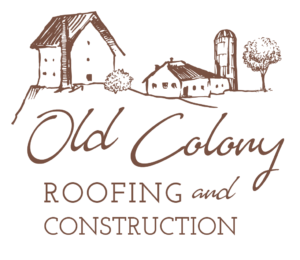Insulation
 Attic insulation is another important element in keeping roofing shingles cool and keeping excess heat from the floors below from raising into the attic space. This is especially important in cold weather months when heating is being used within the living spaces of the house. North Carolina code as od 2021 is R38. There are many types of insulation that can be used but the best bang for your buck is a blown-in- cellulose insulation. This type of insulation provides 3.8R per inch. This would mean that 10 inches of the blown-in cellulose insulation would bring an attic without any insulation to code levels. However, if an attic already has a 6-inch roll of batt insulation in the attic space, a measurement of the current R value can be done and then cellulose insulation can be added on top of that to achieve the desired R38.
Attic insulation is another important element in keeping roofing shingles cool and keeping excess heat from the floors below from raising into the attic space. This is especially important in cold weather months when heating is being used within the living spaces of the house. North Carolina code as od 2021 is R38. There are many types of insulation that can be used but the best bang for your buck is a blown-in- cellulose insulation. This type of insulation provides 3.8R per inch. This would mean that 10 inches of the blown-in cellulose insulation would bring an attic without any insulation to code levels. However, if an attic already has a 6-inch roll of batt insulation in the attic space, a measurement of the current R value can be done and then cellulose insulation can be added on top of that to achieve the desired R38.
Understanding Cellulose Insulation
If you’re interested in insulating your home, there are many different materials fit for the job. One such effective insulating agent is cellulose. Cellulose insulation is the oldest form of home insulation and has been widely used in homes and other structures since the 1950s. Because of its many attractive benefits, such as reduced noise transmission and long-term energy savings, it has remained a popular insulation choice to this day. To gain a better understanding of cellulose insulation and determine if it is the right insulation choice for your home, continue reading.
What is Cellulose Insulation?
Cellulose insulation is an insulating agent that is composed primarily of recycled materials. Roughly 70 to 80 percent of cellulose insulation consists of waste paper products, such as recycled newspaper or cardboard. The remaining percent of cellulose insulation consists of a variety of fire-retardant chemicals, such as borax, boric acid, sodium borate, and ammonium sulfate. Such chemicals do not have any adverse health or safety effects.
Blown-In Cellulose
Blown-in cellulose insulation is the most common type of cellulose insulation method used in homes. It involves blowing the cellulose insulation into an area via a long, flexible tube to fill cavities or serve as a supplemental blanket over existing insulation.
Benefits of Cellulose Insulation
Cellulose insulation offers numerous advantages to homeowners, which have allowed it to withstand the test of time. Some of the main benefits of cellulose insulation include:
- Acts as an effective sound barrier: Cellulose doesn’t just prevent the transfer of heat throughout a home; it also helps reduce the transmission of noise. Because it blocks out unwanted outside noises and prevents sound from traveling throughout different rooms of your home, cellulose is a great insulation option.
- Enhances the R-value of a space: Loose fill cellulose insulation has a quality R-value of around 3.2 to 3.8 per inch, which is roughly one point higher than loose fill fiberglass. By increasing the R-value of a space, cellulose insulation can help homeowners enjoy substantial energy savings when heating or cooling their homes.
- Eco-friendly: Cellulose consists primarily of recycled materials, which makes it one of the most eco-friendly insulation materials on the market. In addition, by serving as an effective insulating agent, cellulose can reduce the total energy usage in a home, further benefiting the environment.
- High flame resistance: Because of the many fire-retardant chemicals that cellulose insulation is treated with, the insulating agent has a high flame resistance.
- Prevents pests: The chemicals that cellulose insulation is heavily treated with don’t just act as fire-resistant agents; they are also effective for helping prevent pest infestations. Such chemicals are toxic to pests, which can help stop infestations in areas where cellulose is installed.
- Controls mold: In addition to preventing pest outbreaks, cellulose insulation can also help prevent outbreaks of mold. Because of the chemicals that cellulose is treated with, mold is unable to grow and spread on the insulation material.
We Know Roofs
Whether, you are looking at repairing an existing roof, or replacing a roof, there are plenty of questions to answer. Old Colony Roofing is here to provide credible and honest information – from a true expert.
The goal of these pages is to arm you with the pros and cons of a variety of roofing questions and answers.
Ask About Our Financing
Roofs as low as $99/month*
Roofing Repairs
The good news is, roofs can be repaired. The bad news is, there are reasons why this may not make sense. First, it is important to discuss common roofing failures and why these result in leaking. See below for a list of common roofing failures:










